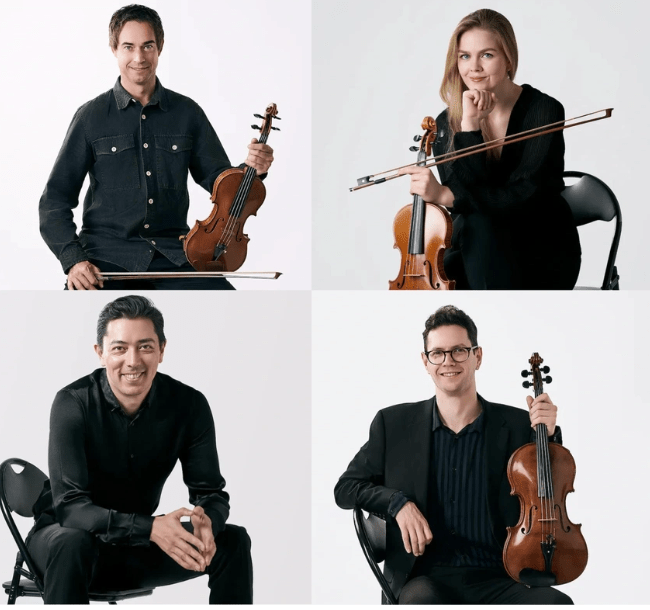Reviewed by Andrew Buchanan-Smart
Works by J S Bach, Osvaldo Golijov and F, Schubert
Simeon Broom (violin), Jessica Oddie (violin), Alexander McFarlane (viola), Ken Ichinose (cello)
The String Quartet comprised musicians from the New Zealand Symphony Orchestra. The venue has a beautifully resonant acoustic quality which provides a well-rounded homogenised sound. Cambridge patrons are very lucky to have an auditorium of this quality.
Bach’s The Art of Fugue BWV 1080 opened the concert. The quartet performed five of the 14 fugues and four canons in D minor. The work is a masterpiece of invention, with each fugue becoming more complicated than the previous one. The challenge here for any ensemble is to balance the various parts or instruments to enable the musical ideas and various complex elements to be clearly audible. In this aspect the ensemble was excellent, and the different parts were performed with warmth, precision and clarity.
Golijov’s Tenebrae juxtaposes the brutality of war with the innocence of youth and hope. It has two movements and juxtaposes two elements — a mood of serene melancholy bookends the aggression and brutality the composer witnessed during a visit to Israel in 2000. The meditative episodes provided a tranquil atmosphere to prevail.
Schubert’s G major String Quartet (D887), his last and greatest, has been likened to a symphony by virtue of its scale and its orchestral mode of expression. The Quartet captured all the contrasting elements of Schubert’s musical palette. It was the human element that prevailed, a warmth and emotional sensitivity that was most impressive about this performance. The Quartet generated power in the tuttis, yet the individual voices were clearly delineated. The first movement’s measured tempo allowed for great breadth of expression which underlined the symphonic nature of the work. The conflict-ridden music of the Andante conveyed a wonderfully warm legato hue. The Scherzo and Trio and Allegro finale provided an intensity, and revealed much of the music’s inner pathos and beauty as distinct from mere virtuosity. Great music, ideal venue, sumptuous performance!




